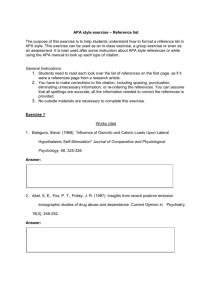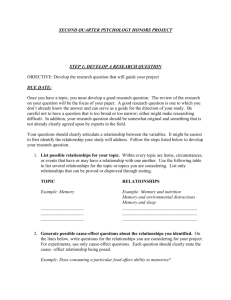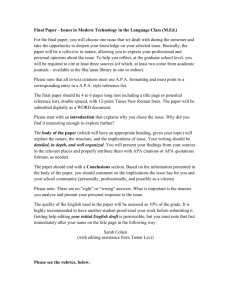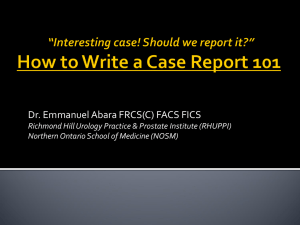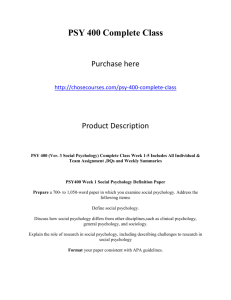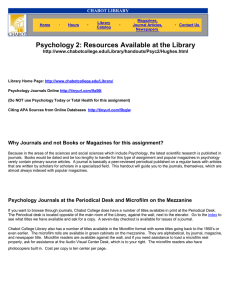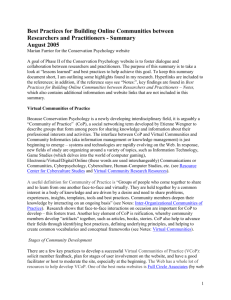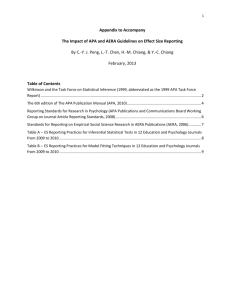Writing empirical research papers
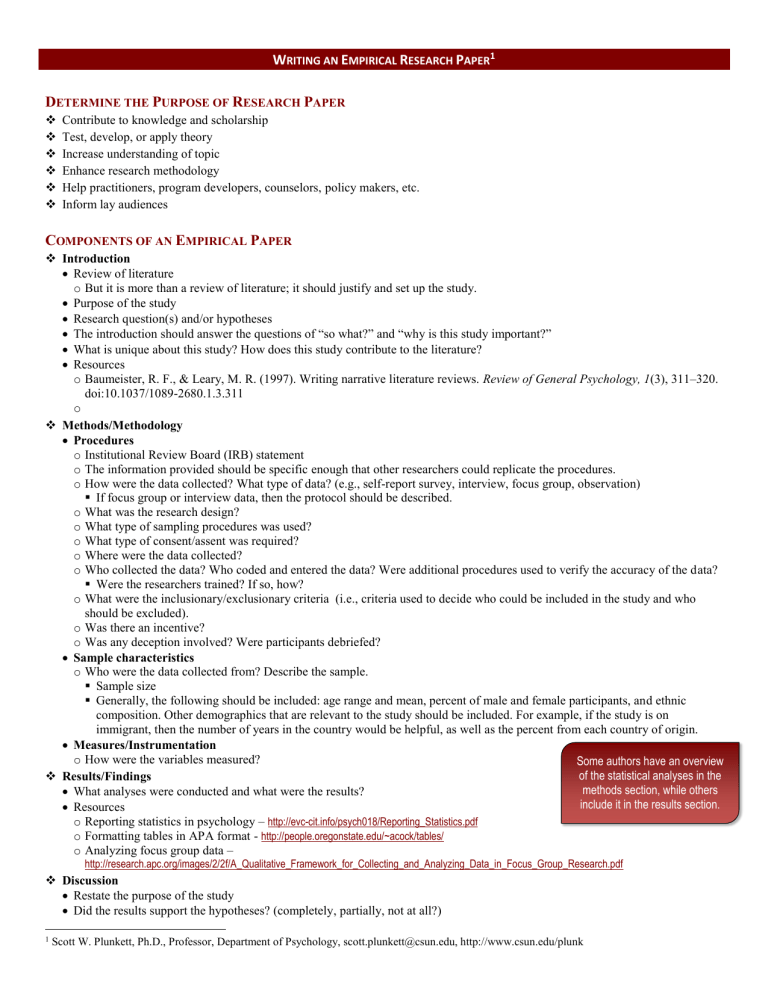
W RITING AN E MPIRICAL R ESEARCH P APER
1
D ETERMINE THE P URPOSE OF R ESEARCH P APER
Contribute to knowledge and scholarship
Test, develop, or apply theory
Increase understanding of topic
Enhance research methodology
Help practitioners, program developers, counselors, policy makers, etc.
Inform lay audiences
C
OMPONENTS OF AN
E
MPIRICAL
P
APER
Introduction
Review of literature o But it is more than a review of literature; it should justify and set up the study.
Purpose of the study
Research question(s) and/or hypotheses
The introduction should answer the questions of “so what?” and “why is this study important?”
What is unique about this study? How does this study contribute to the literature?
Resources o Baumeister, R. F., & Leary, M. R. (1997). Writing narrative literature reviews. Review of General Psychology, 1 (3), 311–320. o doi:10.1037/1089-2680.1.3.311
Methods/Methodology
Procedures o
Institutional Review Board (IRB) statement o The information provided should be specific enough that other researchers could replicate the procedures. o How were the data collected? What type of data? (e.g., self-report survey, interview, focus group, observation)
If focus group or interview data, then the protocol should be described. o What was the research design? o What type of sampling procedures was used? o What type of consent/assent was required? o Where were the data collected? o
Who collected the data? Who coded and entered the data? Were additional procedures used to verify the accuracy of the data?
Were the researchers trained? If so, how? o What were the inclusionary/exclusionary criteria (i.e., criteria used to decide who could be included in the study and who should be excluded). o
Was there an incentive? o Was any deception involved? Were participants debriefed?
Sample characteristics o Who were the data collected from? Describe the sample.
Sample size
Generally, the following should be included: age range and mean, percent of male and female participants, and ethnic composition. Other demographics that are relevant to the study should be included. For example, if the study is on
immigrant, then the number of years in the country would be helpful, as well as the percent from each country of origin.
Measures/Instrumentation o How were the variables measured?
Results/Findings
What analyses were conducted and what were the results?
Resources
Some authors have an overview of the statistical analyses in the methods section, while others include it in the results section. o Reporting statistics in psychology – http://evc-cit.info/psych018/Reporting_Statistics.pdf
o Formatting tables in APA format - http://people.oregonstate.edu/~acock/tables/ o
Analyzing focus group data – http://research.apc.org/images/2/2f/A_Qualitative_Framework_for_Collecting_and_Analyzing_Data_in_Focus_Group_Research.pdf
Discussion
Restate the purpose of the study
Did the results support the hypotheses? (completely, partially, not at all?)
1 Scott W. Plunkett, Ph.D., Professor, Department of Psychology, scott.plunkett@csun.edu, http://www.csun.edu/plunk
Discuss the findings o
Why did the study find these results? o Similar to past research? o Does theory support the results? o If different than previous studies, why? o
Discuss non-significant findings also.
Limitations and research implications o What are the problems (i.e., design flaws) with the current study? Why are they flaws? o
What aspects of your research methods limit the external generalizability? o
Research implications – Based on the limitations, what are ways future studies can improve upon the current study?
Implications o Implications for practice – How can results be used by practitioners, educators, and/or community activists? o
Implications for policymakers – how can policymakers use these results?
Conclusion o What point(s) does the author want to leave with the reader?
K NOWING THE P URPOSE W ILL D ETERMINE THE O UTLET FOR P UBLICATION
Class paper? Refereed vs. non-refereed journal? Book chapter? Research monograph? Book?
What target audience (e.g., practitioners, researchers, educators, policy makers) does the author want to write it for?
What tradeoffs is an author willing to make when publishing?
Example: Is it more important to get the information to more people (e.g., students, researchers, practitioners) but have less prestige, or is it more important to a get the information to a select few (e.g., researchers in the field) and have higher prestige?
I
DENTIFYING THE
J
OURNAL
What level of journal does the author want to publish in
Journal tier/prestige
Impact factor – http://thomsonreuters.com/products_services/science/free/essays/impact_factor/
Examine the mission statement (also called ‘aims and scopes’) and author submission guidelines
Purpose of journal
Acceptable topics (Hint: Look at recent articles published in the journal)
Target audience
Type of manuscripts acceptable (e.g., research, review article, best practices, research notes, book reviews)
Review process
Fee for review/submission
Style guidelines
Page, table, figure, and/or word number limitations
Journal analysis involves looking at current versions of the journal to identify the following:
What components appear in the currently published articles?
How long are the various components? What percentage of each article is comprised by each section?
What types of analyses/methods are used and how are the analyses reported? o
Any qualitative articles? o Is there a preference for mixed methods? o Is multiple regression analysis used or does the journal prefer SEM?
Are the articles written in 1 st person/2 nd person, 3 rd person?
Do most articles have a theory base? Or a particular theory base?
Does the journal have a particular bias on your topic? o Example 1: If you are writing a manuscript on self-esteem, does the journal publish articles that use a global measure of selfesteem, or does the journal only publish articles that examine self-esteem from a multi-dimensional aspect? o Example 2: If you are conducting a program evaluation, does the journal only publish articles that use control groups?
Other issues to find out about the journal include: o Editor and editorial review board o Fees for printing, reprints, etc. o Acceptance and rejection rate
Acceptance/Rejection rates of APA journals – http://www.apa.org/pubs/journals/statistics.aspx
o Length of review process o
Number of reviewers
S
UGGESTED
R
EADINGS FOR
P
UBLISHING
APA journals manuscript submission instructions for authors – http://www.apa.org/pubs/authors/instructions.aspx
Provides a quick overview for publishing and gives a good bibliography of more thorough sources
Clark, D. (1997). From documentary to sitcom: Turning your honors thesis/senior project into a journal article. Psi Chi Journal of
Undergraduate Research, 2 , 3-4.
Fiske, D. W., & Fogg, L. (1990). But the reviewers are making different criticisms of my paper! Diversity and uniqueness in reviewer comments. American Psychologist, 45 , 591-598.
Miller, A. C., & Servan, S. L. (1984). Criteria for identifying a refereed journal. Journal of Higher Education, 55 , 673-697.
Nation, J. R. (1997). The publication process. In J. R. Nation (Ed.), Research methods (pp. 365-380). Upper Saddle River, NJ:
Prentice Hall.
Sternberg, R. J. (1992). How to win acceptances by psychology journals: 21 tips for better writing. American Psychological
Society Observer, 5 (5), 12.
